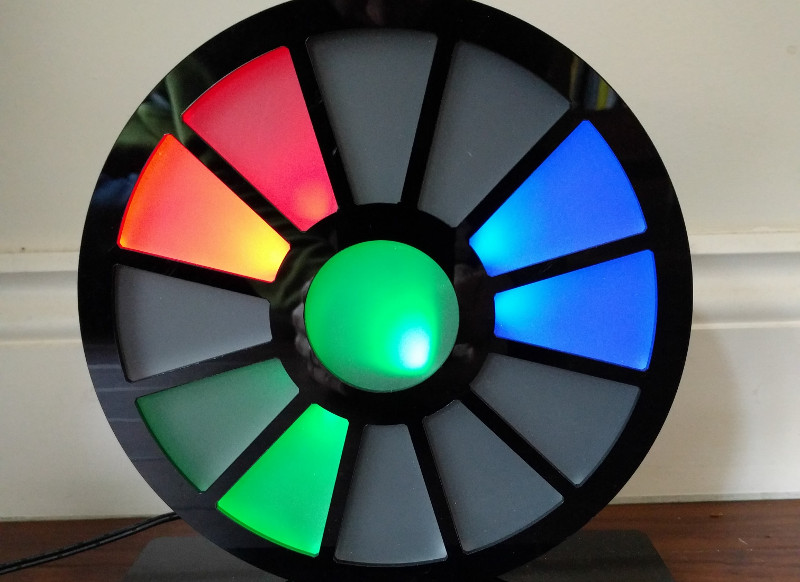When [Vance] joined his local hackspace he sought a project to take advantage of the new tools at his disposal. His solution: an attractive LED colour wheel clock using neopixels driven by an NTP-synchronised ESP8266. Each neopixel illuminates a segment of the clock face through frosted diffuser, the hours are tracked as a red light, the minutes blue, and the seconds green. As each color passes another they are mixed, creating a changing colorscape. 12 neopixels are used, and the whole clock is mounted in a laser cut enclosure.
After an initial prototype on a piece of stripboard he created a PCB in KiCad, complete with space for a 3.3v regulator. This and the source code can be found on the project’s GitHub repository.
The resulting clock is a very high quality build as well as being attractive and useful in its own right. The video shows the color mixing in action, or at least the cyan and yellow products of it.
We like clocks here at Hackaday, and over the years we have featured a lot of them. Looking at light clocks, we’ve featured this Berlin clock and this Fibonacci sequence clock, but closer to the spirit of this project are the many ring clocks that have made these pages. There was this 200 LED ring clock, this huge circular LED clock with an interlocking PCB, and closer still to [Vance]’s clock, another ESP8266 ring clock design.
[via rLab – Reading Hackspace]
















Need BOA account for transfer
Looks very cool – I like the frosted front. I made something similar just a few weeks ago: http://youtu.be/MhFjyzgqkSI
very nice. there should be some way to make short hands vs long hands? then, it needs no explanation.
double the np’s and add blocking barriers maybe?
Does anyone else want to pound on this like an old Simon game or is it just me?
I wish there was some voice explanation, I cannot really understand it in silence. I am ADHD though that could be why